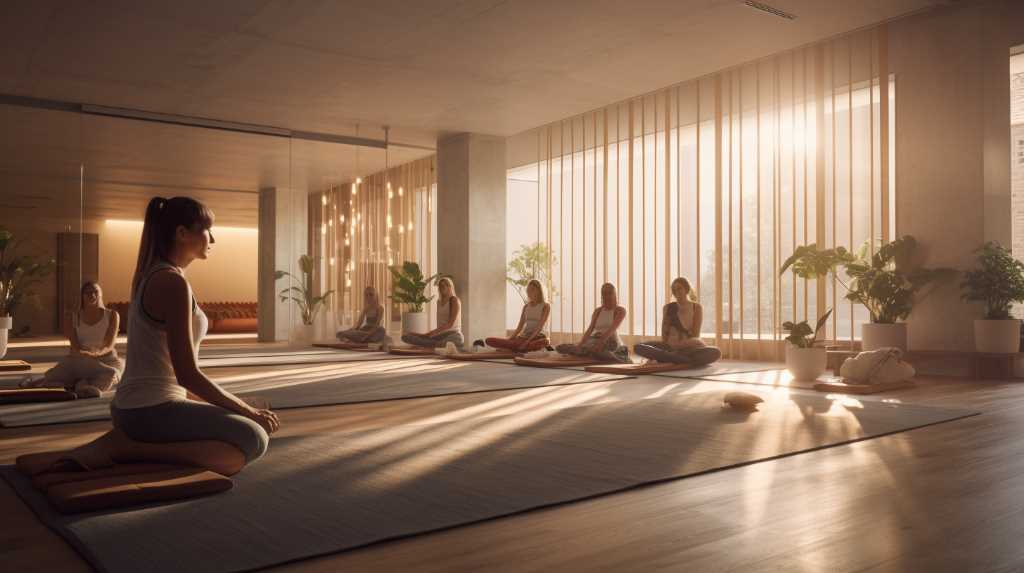Nearly 80% of adults experience stress-related tension in their muscles, but you have a safe and effective tool at your disposal: Progressive Muscle Relaxation (PMR).
Progressive muscle relaxation can be done by anyone, regardless of age or physical ability. It is a simple technique that involves tensing and relaxing different muscle groups in the body, and it can be beneficial for reducing stress, anxiety, and muscle tension.
Whether you’re seeking relief from the pressures of daily life or managing a health condition, PMR is designed with your safety and comfort in mind. It requires just a quiet space and a few minutes of your time.
So, if you’re looking for a safe method to unwind and rejuvenate, PMR could be the perfect fit for you.
Key Takeaways
- Progressive Muscle Relaxation (PMR) can be done by anyone, regardless of age or physical fitness level.
- PMR is particularly beneficial for individuals experiencing stress, anxiety, insomnia, and muscle tension.
- Incorporating PMR into a bedtime routine can enhance sleep quality and promote relaxation.
- PMR is also effective in managing chronic pain conditions and can provide significant relief.
Understanding Progressive Muscle Relaxation
To get the hang of Progressive Muscle Relaxation, you’ll focus on tightening and then releasing each muscle group in your body. This relaxation technique gradually eases the muscle tension that accumulates from stress or physical activity.
You’ll begin at your feet and methodically work your way up, giving each area your full attention. As you learn to distinguish between the sensations of a tensed and a relaxed muscle, you’ll become more attuned to your body’s stress signals.
Remember, it’s crucial to approach areas with injuries or pain cautiously, avoiding exacerbation. When combined with deep breathing, PMR can become an even more powerful tool for tranquility.
Embrace this practice with patience, and you’ll discover a personal haven of calm.
Benefits for Stress and Anxiety
While you manage your day-to-day stress, practicing Progressive Muscle Relaxation can significantly lessen your anxiety levels and improve your response to stressors.
This technique is a powerful ally, offering a relaxation response that counteracts the negative effects of stress and anxiety.
By systematically tensing and then relaxing your muscle groups, you can trigger a state of deep relaxation, which can reduce symptoms that often accompany stress, such as insomnia and muscle tension.
Moreover, PMR enhances your body awareness, making it easier for you to recognize the early signs of stress.
This insight allows you to address tension before it escalates, ensuring you maintain a sense of safety and control over your well-being.
PMR for Sleep Improvement
If you’re struggling to get a restful night’s sleep, incorporating Progressive Muscle Relaxation (PMR) into your bedtime routine could be a game-changer.
As an effective insomnia management tool, PMR helps you unwind and release the day’s tensions, setting the stage for enhanced sleep quality.
Sleep Quality Enhancement
You’ll experience a significant improvement in sleep quality when you incorporate progressive muscle relaxation (PMR) into your nightly routine. This practice is a safe haven for your mind and body, gently alleviating the day’s stress and guiding you into a peaceful slumber.
Here’s how PMR can enhance your sleep:
- Diminishes stress and anxiety: PMR helps lower the tension that often hinders a restful night’s sleep.
- Eases into sleep: The methodical relaxation of muscles can transition you more smoothly into sleep.
- Increases body awareness: Recognizing areas of tension allows for targeted relaxation, promoting overall calmness.
- Alternative to medication: PMR offers a non-pharmacological option to improve sleep, ensuring your safety and well-being.
Embrace PMR for a serene journey to dreamland, where stress dissolves into the night.
Insomnia Management Tool
Every individual struggling with insomnia can benefit from incorporating Progressive Muscle Relaxation (PMR) into their bedtime routine to significantly enhance sleep quality. PMR acts as an effective insomnia management tool, guiding you into a feeling of relaxation that prepares your body and mind for sleep. With regular practice, this muscle relaxation technique can become a cornerstone of your nightly ritual, promoting a tranquil transition into restfulness.
| Benefits of PMR for Sleep | Emotional Impact |
|---|---|
| Reduces physical tension | Eases the mind |
| Encourages a calm state | Soothes anxiety |
| Sets the stage for sleep | Invites serenity |
| Improves overall sleep | Fosters security |
| Manages stress effectively | Builds resilience |
Embrace PMR as a safe haven in your journey towards better sleep, allowing its gentle process to cradle you into a peaceful night’s rest.
Bedtime Routine Integration
Incorporating Progressive Muscle Relaxation into your nightly routine can significantly enhance your sleep quality by teaching your body to unwind systematically. Bedtime routine integration of PMR ensures you release the tension accumulated throughout the day, setting the stage for a restful night. Here’s how you can seamlessly incorporate this technique:
- Set aside 10-15 minutes before bed to practice muscle relaxation in a quiet, comfortable space.
- Begin with your toes and work upwards, tensing then relaxing each muscle group.
- Focus on the sensation of release as you breathe out and let go of the day’s stresses.
- Make this practice a non-negotiable part of your nightly ritual for consistent benefits.
Easing Chronic Pain Conditions
If you’re grappling with chronic pain, engaging in progressive muscle relaxation (PMR) can offer significant relief. This technique, involving tensing and relaxing muscle groups, can be a safe and effective way to mitigate discomfort. By systematically working through the body, PMR encourages a deeper understanding of your physical state, highlighting tension you may not have noticed.
As a self-care strategy, PMR aids in easing chronic pain conditions, complementing standard treatments for various ailments, including headaches, cancer pain, and digestive disturbances. It’s a gentle approach that empowers you to exert control over your body’s response to pain. With regular practice, you’ll likely find a soothing rhythm in the cycle of muscle relaxation, fostering lasting comfort and an enhanced sense of well-being.
PMR in Physical Therapy
As you embark on physical therapy, you may find that incorporating progressive muscle relaxation (PMR) into your regimen specifically targets and alleviates areas of muscle tension and pain. This relaxation technique is a valuable tool in your journey toward recovery and well-being.
Here’s how PMR can be integrated:
- Recognize and release tension in specific muscle groups, fostering greater body awareness.
- Develop skills to manage stress and anxiety, contributing to a more relaxed state of mind.
- Tailor the practice to your unique needs, particularly if you’re dealing with neck or low back pain.
- Continue the practice at home, under the guidance of your physical therapist, ensuring safety and consistency.
Applications for Athletes
By integrating progressive muscle relaxation into your training regimen, you’re equipping yourself with a powerful tool to enhance performance, reduce stress, and prevent injury. This technique allows you to methodically work through various muscle groups, promoting physical relaxation that’s essential in the high-strain environment of sports. Understanding the fine line between tension and relaxation in your muscles can heighten body awareness, leading to more controlled and precise movements.
When anxiety looms before a competition, progressive muscle relaxation serves as a steadying practice, helping to calm your mind and ready your body for the challenges ahead. It’s also invaluable for improving sleep quality, ensuring you’re well-rested and able to recover effectively—vital components in maintaining your athletic edge and overall well-being.
Managing Headaches and Migraines
If you’re struggling with headaches or migraines, identifying what triggers them is a crucial first step.
Progressive Muscle Relaxation (PMR) can be a powerful ally in your toolkit, enhancing the effectiveness of your medication by easing the tension that often exacerbates your discomfort.
Trigger Identification
You’ll find that identifying specific triggers is an essential step in managing your headaches and migraines through Progressive Muscle Relaxation. When you feel stressed and experience the onset of a headache, it’s vital to pinpoint what may be contributing to your discomfort.
Here are common triggers you might encounter:
- Specific foods or beverages that may cause reactions
- Environmental factors such as bright lights or strong odors
- Emotional stressors that heighten tension
- Irregular sleep patterns that exacerbate fatigue
Understanding your trigger identification can empower you with the knowledge you need to relax more effectively. By recognizing what sets off your headaches, you can tailor your use of Progressive Muscle Relaxation to address these stressors, helping to reduce their impact on your well-being.
Relaxation Techniques
As you explore relaxation techniques for managing headaches and migraines, progressive muscle relaxation offers a structured approach that can help reduce the intensity and frequency of these ailments. By learning to systematically relax each muscle group, you can ease the tension that often contributes to headache pain. This method isn’t only insightful but also safe, as it empowers you to take control of your body’s response to stress.
When practiced regularly, progressive muscle relaxation can become a key component in your toolkit for managing discomfort. It’s a professional and empathetic way to address your pain, understanding that relief often comes from within.
Embrace this technique with patience, and you may find a comforting ally in the battle against headaches and migraines.
Medication Efficacy
Patients using medication for headaches and migraines may find that progressive muscle relaxation enhances the drugs’ effectiveness. This technique can be a safe adjunct to your treatment, potentially increasing your comfort and control over pain. Here’s how muscle relaxation can support your journey to wellness:
- Targets Tension: Helps identify areas where you’re holding stress, which can trigger headaches.
- Enhances Relaxation: Serves as a natural complement to medications, encouraging your body to relax more deeply.
- Reduces Medication Dependence: May decrease the need for higher medication doses by managing stress-related symptoms.
- Improves Overall Well-being: Contributes to a holistic approach to health, addressing both the physical and emotional components of pain.
Incorporating progressive muscle relaxation into your routine could offer you a powerful ally in the battle against headaches and migraines.
Can Anyone Practice Progressive Muscle Relaxation, or Are There Specific Requirements?
Yes, anyone can practice progressive muscle relaxation steps. There are no specific requirements or restrictions. This technique is accessible to people of all ages and physical abilities. It is a simple and effective method for reducing stress and promoting relaxation in the body and mind.
Techniques for Beginners
While learning Progressive Muscle Relaxation, you’ll start by focusing on one muscle group at a time, tensing it for a few seconds and then releasing the tension to experience a deep sense of relaxation. It’s essential to wear comfortable clothing to not restrict your movements. Let go of any distractions and commit to the process, allowing yourself to feel the release of tension from each muscle group.
Here’s a simple guide to get you started:
| Muscle Group | Technique |
|---|---|
| Hands | Clench fists, release. |
| Arms | Tense arms, let go. |
| Shoulders | Shrug up, relax down. |
| Legs | Tighten thighs, ease off. |




